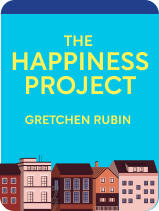

This article is an excerpt from the Shortform book guide to "The Happiness Project" by Gretchen Rubin. Shortform has the world's best summaries and analyses of books you should be reading.
Like this article? Sign up for a free trial here .
Is happiness a feasible goal to pursue? What are some ways to cultivate happiness and bring more joy into your life?
Happiness may seem like an overly vague, intangible, and overwhelming goal to pursue, but it’s not. It’s possible to cultivate happiness and it doesn’t require you to overhaul your whole life. All it takes is a few simple tweaks to your usual routine.
Here are five simple and actionable ways to cultivate more happiness.
Can You Cultivate Happiness?
Everyone wants to find true happiness in their lives, but many of us believe that happiness can only come from experiencing huge changes—such as a trip around the world or a lottery jackpot. But, as it turns out, you can cultivate happiness without changing much at all.
1) Boost Your Energy
Happiness is an overwhelming and intangible goal, but small steps toward simply being physically healthier are tangible and achievable—naturally increasing your willingness to cultivate happiness. There are two important steps to increasing your physical energy: getting more sleep and exercising more.
Get More Sleep
There are three effective ways to train your brain to get to sleep earlier.
- First, put your brain “to bed”—don’t do anything that will stimulate your brain late at night. For example, instead of playing video games, read a book. Additionally, lower your lights at night—this signals to your brain that it’s time for sleep.
- Second, question your “me” time. If you’re staying up because you have too much to do, ask yourself: Am I really enjoying these activities or performing them effectively if I’m exhausted? Where possible, push your tasks to other times when you’ll be more alert, like the weekend.
- Third, get ready well before your bedtime, before you’re too exhausted for your routine.
Exercise More
Exercise comes with myriad benefits such as improved mental clarity, lower risk of dementia, and boosted energy. There are several simple ways to start—and stick to—exercise routines.
- Ask a friend. Studies show that asking someone how happy they are doing an activity often reveals how happy you’ll be partaking in the same activity. Find a friend who loves their routine, and try it out for yourself. If you don’t like it, try again with a different routine. If you do enjoy it, you’ll be motivated to stick with it.
- Walk when you can. Walking is a low-intensity exercise that comes with many benefits—it reduces stress, provides a quick increase in energy, and getting out into the sunlight stimulates dopamine and serotonin production, improving your mood. Furthermore, it’s very accessible—you just need to commit yourself to it. You can do this in several ways. First, vow to walk when you need to run errands that are reasonably close by. Second, get a pedometer—it will help you track your daily activity and striving to hit 10k steps gives you a bit of extra motivation.
2) Clear Your Clutter
Understand that “clutter” takes many forms.
- Nostalgia clutter includes items you’re holding onto from your past, even though you don’t need or use them, such as hockey equipment from your college days.
- “Useful” clutter includes items that are useful, just not for you. This clutter looks like boxes of old cell phone chargers or half-empty cans of house paint.
- Sales clutter includes items you bought because they were on sale, but don’t use, such as impractical clothing or one-purpose kitchen gadgets.
- Free clutter includes items you’ve accumulated because they were given or handed down to you, such as company tote bags or a gifted purse that’s not your style.
- “Shouldn’t” clutter includes items that you’re holding onto but really shouldn’t use anymore, such as ratty sweatshirts or a half-broken pair of skis.
- Ambitious clutter includes items that you have the ambition to use, but probably won’t, such as scrapbooking materials or fancy cake decorating supplies.
- Buyer’s remorse clutter includes bad purchases—while holding onto it feels like you’re “using” it in some way, giving it away would feel like admitting you made a poor choice.
For each of your decluttering tasks, set up three piles: throw away, give away, and keep. Then, assign your items to one of these piles.
- Put anything that is objectively useless into the throw away pile, such as t-shirts that are riddled with holes or phone chargers from the early 2000s.
- Give away anything that’s usable but you’ll realistically never use, such as pants that haven’t fit for 5 years or the breadmaker still in its sealed box.
3) Seek Out More Fun
It’s a no-brainer that having fun will bring more happiness into your life. But to have more fun, you must know what you find fun in the first place. It might sound strange, but it’s very possible that you’re not sure how you have fun—many people go through life participating in activities that they think they should enjoy instead of activities they actually enjoy. We do this with the goal of projecting a certain image of ourselves, and it’s an easy way to get sucked into activities that don’t feel good or right for us.
There are three parts to creating more opportunities for genuine fun.
- First, run through the ways you seek fun in your everyday life. For each activity, ask yourself: Do I look forward to doing this activity? Does it make me feel energized or drained? These questions will help you separate activities you truly enjoy from activities you’re doing simply because you feel that you should.
- Second, think of new ways to have fun. If you’re having trouble coming up with ideas, try writing down the ways you remember having fun as a child. It’s likely that what was fun for you at a time when productivity wasn’t a concern will still be fun for you now.
- Third, embrace your idea of fun and announce it to others. When you talk about your interests, you’re more likely to connect with like-minded people than if you kept your interests to yourself. For example, Rubin has a passion for reading children’s literature but used to feel it wasn’t “legitimate” enough to talk about. Once she and a friend spoke about their mutual interest in children’s literature, they were able to create a children’s literature book club and add genuinely fun meetings to their lives.
4) Nurture Your Friendships
Friendship is the one thing that everyone—scientists, philosophers, and happiness experts—can agree is a major contributor to overall happiness and life satisfaction. Maintaining friendships takes a lot of work, and this work can easily get lost in your busy everyday life. Take the initiative in your friendships to be the one who makes an effort to stay in touch and follow through with plans.
Stay in Touch
Reaching out to old friends to let them know you’re thinking of them is a small gesture that goes a long way toward strengthening bonds—for example, Rubin emailed her friends on their birthdays. For you, the resolution to keep in touch might look like making a list of friends you’ve been meaning to reach out to, and contacting one of them each Saturday afternoon. Or, you might set a date—like the first day of summer or Valentine’s Day—as your “check-in” day.
While a quick check-in won’t guarantee the level of closeness you had before you lost touch—as it’s likely you’re both busy or live far apart—the reminder of companionship will give both of you a moment of rejuvenation in your day.
Follow Through With Plans
If you don’t show up for plans with your friends, your friendships will have a much harder time surviving.
- Showing up looks like saying, “Let’s get coffee” and then actually making plans, going to housewarming parties, visiting your friend after they have a baby, or going to events put on by friends.
When you show up for events in others’ lives, no matter how small or large, you strengthen your bond with them—while this can deepen an already close relationship, it can also push a new friendship toward “close” friendship due to the mere exposure effect. The more people are exposed to something—such as sounds, colors, or people—the more they naturally start to like it. Therefore, the more people see you, the more they’ll like you, and vice versa.
5) Practice Spirituality
Whether you’re religious or not, it’s important to explore various “spiritual states” to cultivate more happiness—these states include awe, mindfulness, gratitude, and even reflection on death. Research shows that spiritual people—that is, people who spend time considering these spiritual states—are happier with their lives overall. In turn, this elevated happiness grants them better mental and physical health, greater longevity, and an increased ability to deal with stress and setbacks.
Practicing spirituality will help you cultivate a deeper happiness that often is hard to recognize in our day-to-day lives. This deeper happiness includes a sense of gratitude for what you have, the recognition that your life as it is deserves appreciation, and the ability to focus on others’ happiness above your own.

———End of Preview———
Like what you just read? Read the rest of the world's best book summary and analysis of Gretchen Rubin's "The Happiness Project" at Shortform .
Here's what you'll find in our full The Happiness Project summary :
- How to increase the overall happiness in your daily life
- Why changing everything won't bring you happiness
- How to create your own year-long happiness project






